Antarctic · Bolivia · Brazil · Chile · Colombia · Polar Regions · Regions · South America
Latin America’s best stargazing spots
With the luxury of wide-open spaces in spectacularly remote locations, the rural hideaways of Latin America’s varied geography lie under some of the clearest skies on planet earth. From the arid deserts of northern Chile to the tropical wetlands of western Brazil, travellers seeking the bliss of isolation in the countryside are also treated to wonderful views of the stars due to the lack of urban light pollution. Perhaps something that city-dwellers are not so used to being able to enjoy, stargazing in Latin America can be a magical experience during your bespoke luxury trip. Here are our favourite places for stargazing in the region…
 The Atacama Desert, Northern Chile
Renowned for some of the clearest skies in the world, Chile’s arid Atacama Desert is also the driest on the planet. With very few major settlements, the dramatic landscapes of this surreal lunar-like region are totally unspoiled by urbanisation and the associated light pollution that obscures the stars in more developed areas. Enjoy exhilarating days of touring the area’s mountain lagoons, copper-coloured valleys and thermal springs before settling down in the evening with a glass of sumptuous Chilean wine to turn your gaze toward the crystal-clear skies.
The Atacama Desert, Northern Chile
Renowned for some of the clearest skies in the world, Chile’s arid Atacama Desert is also the driest on the planet. With very few major settlements, the dramatic landscapes of this surreal lunar-like region are totally unspoiled by urbanisation and the associated light pollution that obscures the stars in more developed areas. Enjoy exhilarating days of touring the area’s mountain lagoons, copper-coloured valleys and thermal springs before settling down in the evening with a glass of sumptuous Chilean wine to turn your gaze toward the crystal-clear skies.
 How to do it
The Atacama Desert is home to some of Chile’s finest luxury hotels. Fly into Calama (CJC) from Santiago de Chile and transfer a short distance to these stunning isolated hideaways. Our favourite options are Tierra Atacama (pictured), Awasi and Alto Atacama. All three hotels offer comprehensive programmes that include three gourmet meals a day and a range of local activities, including stargazing. Indulge in a luxurious treatment at the Tierra Spa, explore the scenery with your private guide and driver at Awasi, or relax in the carefully manicured gardens of Alto Atacama. Whichever you choose – a special experience in the desert awaits.
How to do it
The Atacama Desert is home to some of Chile’s finest luxury hotels. Fly into Calama (CJC) from Santiago de Chile and transfer a short distance to these stunning isolated hideaways. Our favourite options are Tierra Atacama (pictured), Awasi and Alto Atacama. All three hotels offer comprehensive programmes that include three gourmet meals a day and a range of local activities, including stargazing. Indulge in a luxurious treatment at the Tierra Spa, explore the scenery with your private guide and driver at Awasi, or relax in the carefully manicured gardens of Alto Atacama. Whichever you choose – a special experience in the desert awaits.
 The Pantanal Wetlands, Western Brazil
Principally a wildlife destination famous for offering visitors the best chance of seeing the majestic jaguar in the wild, the Brazilian Pantanal is also a region of spectacular scenic beauty. Many of the wildlife lodges are tucked away deep in the picturesque countryside composed of rivers, lakes, forests and open tropical plains. With such a lack of modern urban development, the landscapes remain relatively untouched and guests can enjoy clear nights perfect for camping out under the stars with a traditional cocktail in hand. Travel during the dry season (June-October) for the most cloudless skies and the best wildlife sightings.
The Pantanal Wetlands, Western Brazil
Principally a wildlife destination famous for offering visitors the best chance of seeing the majestic jaguar in the wild, the Brazilian Pantanal is also a region of spectacular scenic beauty. Many of the wildlife lodges are tucked away deep in the picturesque countryside composed of rivers, lakes, forests and open tropical plains. With such a lack of modern urban development, the landscapes remain relatively untouched and guests can enjoy clear nights perfect for camping out under the stars with a traditional cocktail in hand. Travel during the dry season (June-October) for the most cloudless skies and the best wildlife sightings.
 How to do it
Upon arrival in Brazil at an international hub, connect onwards on a short internal flight to Cuiabá (CGB) or Campo Grande (CGR), gateways to the northern and southern Pantanal respectively. From the main towns, transfer into a remote eco-lodge for a few nights of rural tranquillity, magical wildlife experiences and clear skies. We recommend Caiman Ecological Refuge (pictured) in the south (renowned for its magnificent jaguar conservation project) and Pousada Rio Mutum in the north.
How to do it
Upon arrival in Brazil at an international hub, connect onwards on a short internal flight to Cuiabá (CGB) or Campo Grande (CGR), gateways to the northern and southern Pantanal respectively. From the main towns, transfer into a remote eco-lodge for a few nights of rural tranquillity, magical wildlife experiences and clear skies. We recommend Caiman Ecological Refuge (pictured) in the south (renowned for its magnificent jaguar conservation project) and Pousada Rio Mutum in the north.
 The Tatacoa Desert, Southern Colombia
The Tatacoa Desert covers 330 square kilometres of land in Colombia’s Huila Department. Nicknamed the Valley of Sorrows in 1538 by the Spanish conquistador Gonzalo Jiménez de Quesada, this rocky landscape is comparable to the reddish panoramas of the Atacama in Chile yet is much less frequently visited. The greyish and orange deserts of the region are sparsely populated and thus light pollution is minimal. Explore the desert with a private guide and hike the canyons and gullies for sweeping views of the scenery before visiting the local observatories for an in-depth stargazing experience by night.
The Tatacoa Desert, Southern Colombia
The Tatacoa Desert covers 330 square kilometres of land in Colombia’s Huila Department. Nicknamed the Valley of Sorrows in 1538 by the Spanish conquistador Gonzalo Jiménez de Quesada, this rocky landscape is comparable to the reddish panoramas of the Atacama in Chile yet is much less frequently visited. The greyish and orange deserts of the region are sparsely populated and thus light pollution is minimal. Explore the desert with a private guide and hike the canyons and gullies for sweeping views of the scenery before visiting the local observatories for an in-depth stargazing experience by night.
 How to do it
Fly one hour from Colombia’s booming Andean capital city, Bogotá, south to Neiva (NVA). The Tatacoa Desert is located a one and a half hour’s drive away to the north. Avoid the desert on weekends if you can, it sometime gets busy with local partygoers as a popular Colombian weekend getaway. Whilst certainly not actually a ‘luxury’ property, we recommend a short stay at the remote Bethel Bio-Luxury Hotel where the luxury of experience and location is the main draw. The cosy but rustic rooms offer basic comforts and the hotel is situated mere minutes from the Tatacoa Observatory.
How to do it
Fly one hour from Colombia’s booming Andean capital city, Bogotá, south to Neiva (NVA). The Tatacoa Desert is located a one and a half hour’s drive away to the north. Avoid the desert on weekends if you can, it sometime gets busy with local partygoers as a popular Colombian weekend getaway. Whilst certainly not actually a ‘luxury’ property, we recommend a short stay at the remote Bethel Bio-Luxury Hotel where the luxury of experience and location is the main draw. The cosy but rustic rooms offer basic comforts and the hotel is situated mere minutes from the Tatacoa Observatory.
 Patagonia, Antarctica & South Georgia
Perhaps offering some of the most striking scenery luxury travellers will ever experience, the far south of Latin America offers a multitude of remote escapes under transparent night skies. By day, enjoy the magnificent trekking trails in Argentina’s Tierra del Fuego’s National Park and by night, cosy up by an outdoor fire pit and observe the starry skies in the tranquillity of the frozen air. The further south you travel, the greater your chances of catching sight of the rare astronomical phenomenon of the southern lights, the aurora australis – a lesser known sibling to the northern aurora borealis. Cruising the icy waters of Antarctica with the jewel-toned southern lights overhead is a once-in-a-lifetime experience.
Patagonia, Antarctica & South Georgia
Perhaps offering some of the most striking scenery luxury travellers will ever experience, the far south of Latin America offers a multitude of remote escapes under transparent night skies. By day, enjoy the magnificent trekking trails in Argentina’s Tierra del Fuego’s National Park and by night, cosy up by an outdoor fire pit and observe the starry skies in the tranquillity of the frozen air. The further south you travel, the greater your chances of catching sight of the rare astronomical phenomenon of the southern lights, the aurora australis – a lesser known sibling to the northern aurora borealis. Cruising the icy waters of Antarctica with the jewel-toned southern lights overhead is a once-in-a-lifetime experience.
 How to do it
For Antarctica or South Georgia, head down to Ushuaia in Argentina and board a luxury expedition cruise that covers the Antarctica peninsula and the surrounding southern islands. Whilst the best time to catch sight of the ethereal hues of the aurora australis is during the near-unnavigable Antarctic winter, frequent sightings are often noted towards the end of the cruise season in March, which is also a good time for whale watching in the region. Patagonia is slightly easier – explore the far south of Argentina or Chile during the winter months of May-July to catch a glimpse of the phenomenon. Arakur hotel (pictured) in Ushuaia would be a wonderful choice of accommodation here.
How to do it
For Antarctica or South Georgia, head down to Ushuaia in Argentina and board a luxury expedition cruise that covers the Antarctica peninsula and the surrounding southern islands. Whilst the best time to catch sight of the ethereal hues of the aurora australis is during the near-unnavigable Antarctic winter, frequent sightings are often noted towards the end of the cruise season in March, which is also a good time for whale watching in the region. Patagonia is slightly easier – explore the far south of Argentina or Chile during the winter months of May-July to catch a glimpse of the phenomenon. Arakur hotel (pictured) in Ushuaia would be a wonderful choice of accommodation here.
 The Salar de Uyuni, Bolivia
Recently used as the real-life set for a blockbuster Star Wars film, the celestial white expanse of the Uyuni Salt Flats is easily one of the planet’s most striking natural wonders. This desolate crystalline landscape is equally as wonderful in the dry and wet seasons for stargazing. The Salar’s extreme remoteness makes for perfectly clear skies all year round: during the dry season the sparkle of the exposed salt crystals almost radiate a light of their own as they reflect the moonlight, whereas in the wet season, the pattern of the night sky is reflected perfectly on the glossy mirror of the Salar’s wet surface.
The Salar de Uyuni, Bolivia
Recently used as the real-life set for a blockbuster Star Wars film, the celestial white expanse of the Uyuni Salt Flats is easily one of the planet’s most striking natural wonders. This desolate crystalline landscape is equally as wonderful in the dry and wet seasons for stargazing. The Salar’s extreme remoteness makes for perfectly clear skies all year round: during the dry season the sparkle of the exposed salt crystals almost radiate a light of their own as they reflect the moonlight, whereas in the wet season, the pattern of the night sky is reflected perfectly on the glossy mirror of the Salar’s wet surface.
 How to do it
Uyuni is accessible via short local flights from La Paz and overland from the nearby Atacama Desert in Chile. We recommend dedicating between 3 and 5 nights to a comprehensive tour of the breath-taking scenery in the region across the south of Bolivia and the north of Chile in order to tick off all the highlights of the area’s impressive geography. Newly opened Kachi Lodge (pictured) in Uyuni offers a fully personalised full-board luxury experience of the Salt Flats with indulgent cuisine provided in partnership with Gustu, La Paz’s most in-demand eatery.
How to do it
Uyuni is accessible via short local flights from La Paz and overland from the nearby Atacama Desert in Chile. We recommend dedicating between 3 and 5 nights to a comprehensive tour of the breath-taking scenery in the region across the south of Bolivia and the north of Chile in order to tick off all the highlights of the area’s impressive geography. Newly opened Kachi Lodge (pictured) in Uyuni offers a fully personalised full-board luxury experience of the Salt Flats with indulgent cuisine provided in partnership with Gustu, La Paz’s most in-demand eatery.

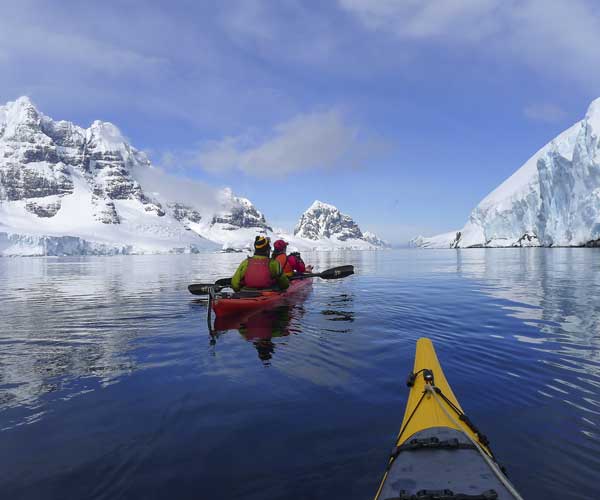 The Atacama Desert, Northern Chile
Renowned for some of the clearest skies in the world, Chile’s arid Atacama Desert is also the driest on the planet. With very few major settlements, the dramatic landscapes of this surreal lunar-like region are totally unspoiled by urbanisation and the associated light pollution that obscures the stars in more developed areas. Enjoy exhilarating days of touring the area’s mountain lagoons, copper-coloured valleys and thermal springs before settling down in the evening with a glass of sumptuous Chilean wine to turn your gaze toward the crystal-clear skies.
The Atacama Desert, Northern Chile
Renowned for some of the clearest skies in the world, Chile’s arid Atacama Desert is also the driest on the planet. With very few major settlements, the dramatic landscapes of this surreal lunar-like region are totally unspoiled by urbanisation and the associated light pollution that obscures the stars in more developed areas. Enjoy exhilarating days of touring the area’s mountain lagoons, copper-coloured valleys and thermal springs before settling down in the evening with a glass of sumptuous Chilean wine to turn your gaze toward the crystal-clear skies.
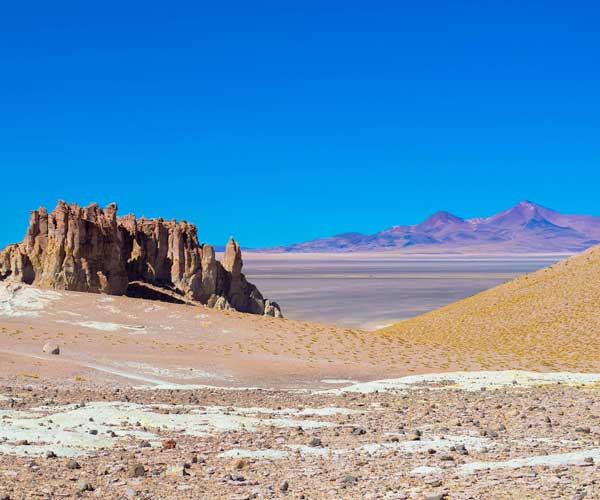 How to do it
The Atacama Desert is home to some of Chile’s finest luxury hotels. Fly into Calama (CJC) from Santiago de Chile and transfer a short distance to these stunning isolated hideaways. Our favourite options are Tierra Atacama (pictured), Awasi and Alto Atacama. All three hotels offer comprehensive programmes that include three gourmet meals a day and a range of local activities, including stargazing. Indulge in a luxurious treatment at the Tierra Spa, explore the scenery with your private guide and driver at Awasi, or relax in the carefully manicured gardens of Alto Atacama. Whichever you choose – a special experience in the desert awaits.
How to do it
The Atacama Desert is home to some of Chile’s finest luxury hotels. Fly into Calama (CJC) from Santiago de Chile and transfer a short distance to these stunning isolated hideaways. Our favourite options are Tierra Atacama (pictured), Awasi and Alto Atacama. All three hotels offer comprehensive programmes that include three gourmet meals a day and a range of local activities, including stargazing. Indulge in a luxurious treatment at the Tierra Spa, explore the scenery with your private guide and driver at Awasi, or relax in the carefully manicured gardens of Alto Atacama. Whichever you choose – a special experience in the desert awaits.
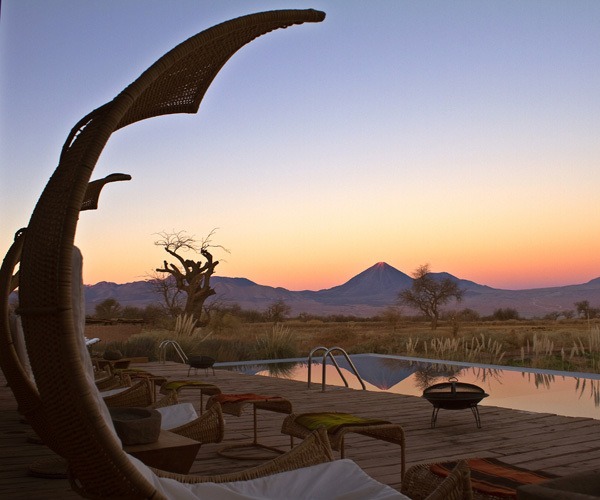 The Pantanal Wetlands, Western Brazil
Principally a wildlife destination famous for offering visitors the best chance of seeing the majestic jaguar in the wild, the Brazilian Pantanal is also a region of spectacular scenic beauty. Many of the wildlife lodges are tucked away deep in the picturesque countryside composed of rivers, lakes, forests and open tropical plains. With such a lack of modern urban development, the landscapes remain relatively untouched and guests can enjoy clear nights perfect for camping out under the stars with a traditional cocktail in hand. Travel during the dry season (June-October) for the most cloudless skies and the best wildlife sightings.
The Pantanal Wetlands, Western Brazil
Principally a wildlife destination famous for offering visitors the best chance of seeing the majestic jaguar in the wild, the Brazilian Pantanal is also a region of spectacular scenic beauty. Many of the wildlife lodges are tucked away deep in the picturesque countryside composed of rivers, lakes, forests and open tropical plains. With such a lack of modern urban development, the landscapes remain relatively untouched and guests can enjoy clear nights perfect for camping out under the stars with a traditional cocktail in hand. Travel during the dry season (June-October) for the most cloudless skies and the best wildlife sightings.
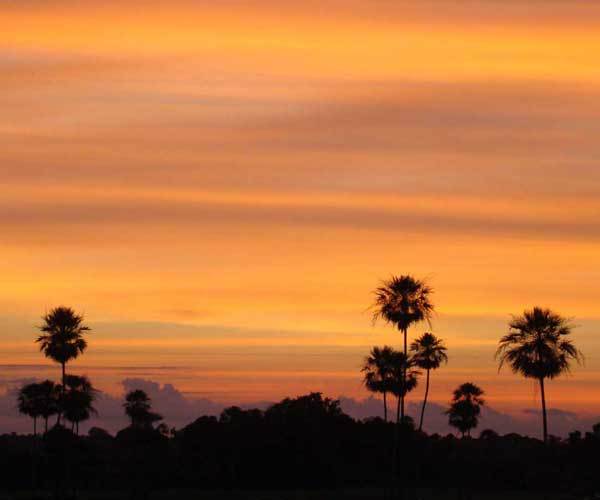 How to do it
Upon arrival in Brazil at an international hub, connect onwards on a short internal flight to Cuiabá (CGB) or Campo Grande (CGR), gateways to the northern and southern Pantanal respectively. From the main towns, transfer into a remote eco-lodge for a few nights of rural tranquillity, magical wildlife experiences and clear skies. We recommend Caiman Ecological Refuge (pictured) in the south (renowned for its magnificent jaguar conservation project) and Pousada Rio Mutum in the north.
How to do it
Upon arrival in Brazil at an international hub, connect onwards on a short internal flight to Cuiabá (CGB) or Campo Grande (CGR), gateways to the northern and southern Pantanal respectively. From the main towns, transfer into a remote eco-lodge for a few nights of rural tranquillity, magical wildlife experiences and clear skies. We recommend Caiman Ecological Refuge (pictured) in the south (renowned for its magnificent jaguar conservation project) and Pousada Rio Mutum in the north.
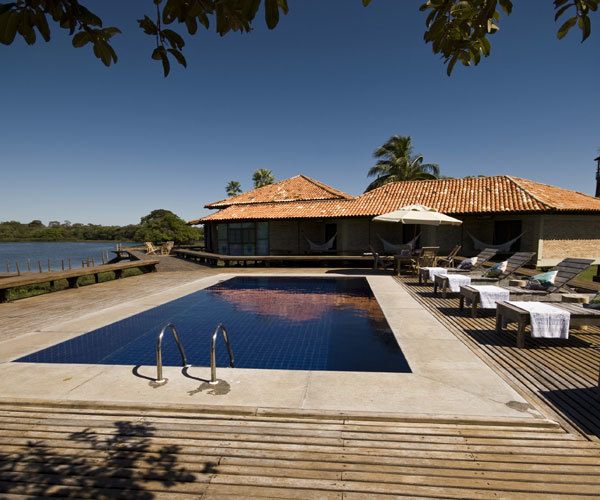 The Tatacoa Desert, Southern Colombia
The Tatacoa Desert covers 330 square kilometres of land in Colombia’s Huila Department. Nicknamed the Valley of Sorrows in 1538 by the Spanish conquistador Gonzalo Jiménez de Quesada, this rocky landscape is comparable to the reddish panoramas of the Atacama in Chile yet is much less frequently visited. The greyish and orange deserts of the region are sparsely populated and thus light pollution is minimal. Explore the desert with a private guide and hike the canyons and gullies for sweeping views of the scenery before visiting the local observatories for an in-depth stargazing experience by night.
The Tatacoa Desert, Southern Colombia
The Tatacoa Desert covers 330 square kilometres of land in Colombia’s Huila Department. Nicknamed the Valley of Sorrows in 1538 by the Spanish conquistador Gonzalo Jiménez de Quesada, this rocky landscape is comparable to the reddish panoramas of the Atacama in Chile yet is much less frequently visited. The greyish and orange deserts of the region are sparsely populated and thus light pollution is minimal. Explore the desert with a private guide and hike the canyons and gullies for sweeping views of the scenery before visiting the local observatories for an in-depth stargazing experience by night.
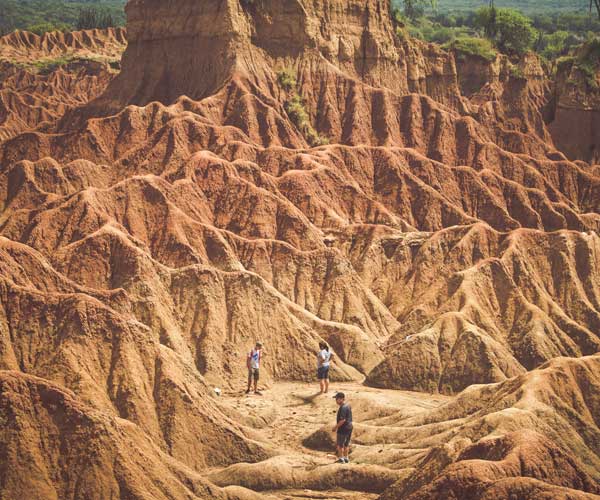 How to do it
Fly one hour from Colombia’s booming Andean capital city, Bogotá, south to Neiva (NVA). The Tatacoa Desert is located a one and a half hour’s drive away to the north. Avoid the desert on weekends if you can, it sometime gets busy with local partygoers as a popular Colombian weekend getaway. Whilst certainly not actually a ‘luxury’ property, we recommend a short stay at the remote Bethel Bio-Luxury Hotel where the luxury of experience and location is the main draw. The cosy but rustic rooms offer basic comforts and the hotel is situated mere minutes from the Tatacoa Observatory.
How to do it
Fly one hour from Colombia’s booming Andean capital city, Bogotá, south to Neiva (NVA). The Tatacoa Desert is located a one and a half hour’s drive away to the north. Avoid the desert on weekends if you can, it sometime gets busy with local partygoers as a popular Colombian weekend getaway. Whilst certainly not actually a ‘luxury’ property, we recommend a short stay at the remote Bethel Bio-Luxury Hotel where the luxury of experience and location is the main draw. The cosy but rustic rooms offer basic comforts and the hotel is situated mere minutes from the Tatacoa Observatory.
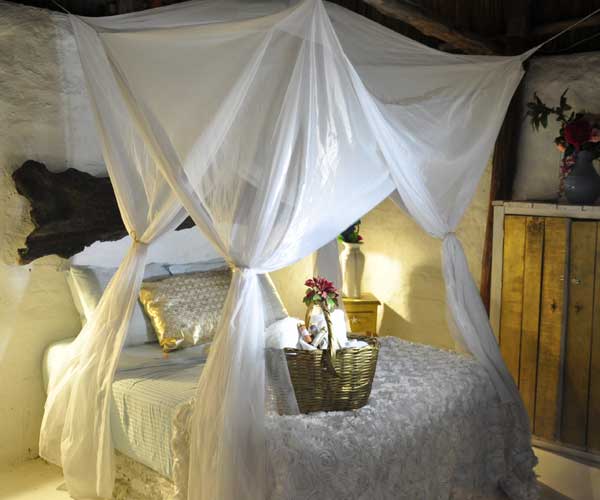 Patagonia, Antarctica & South Georgia
Perhaps offering some of the most striking scenery luxury travellers will ever experience, the far south of Latin America offers a multitude of remote escapes under transparent night skies. By day, enjoy the magnificent trekking trails in Argentina’s Tierra del Fuego’s National Park and by night, cosy up by an outdoor fire pit and observe the starry skies in the tranquillity of the frozen air. The further south you travel, the greater your chances of catching sight of the rare astronomical phenomenon of the southern lights, the aurora australis – a lesser known sibling to the northern aurora borealis. Cruising the icy waters of Antarctica with the jewel-toned southern lights overhead is a once-in-a-lifetime experience.
Patagonia, Antarctica & South Georgia
Perhaps offering some of the most striking scenery luxury travellers will ever experience, the far south of Latin America offers a multitude of remote escapes under transparent night skies. By day, enjoy the magnificent trekking trails in Argentina’s Tierra del Fuego’s National Park and by night, cosy up by an outdoor fire pit and observe the starry skies in the tranquillity of the frozen air. The further south you travel, the greater your chances of catching sight of the rare astronomical phenomenon of the southern lights, the aurora australis – a lesser known sibling to the northern aurora borealis. Cruising the icy waters of Antarctica with the jewel-toned southern lights overhead is a once-in-a-lifetime experience.
 How to do it
For Antarctica or South Georgia, head down to Ushuaia in Argentina and board a luxury expedition cruise that covers the Antarctica peninsula and the surrounding southern islands. Whilst the best time to catch sight of the ethereal hues of the aurora australis is during the near-unnavigable Antarctic winter, frequent sightings are often noted towards the end of the cruise season in March, which is also a good time for whale watching in the region. Patagonia is slightly easier – explore the far south of Argentina or Chile during the winter months of May-July to catch a glimpse of the phenomenon. Arakur hotel (pictured) in Ushuaia would be a wonderful choice of accommodation here.
How to do it
For Antarctica or South Georgia, head down to Ushuaia in Argentina and board a luxury expedition cruise that covers the Antarctica peninsula and the surrounding southern islands. Whilst the best time to catch sight of the ethereal hues of the aurora australis is during the near-unnavigable Antarctic winter, frequent sightings are often noted towards the end of the cruise season in March, which is also a good time for whale watching in the region. Patagonia is slightly easier – explore the far south of Argentina or Chile during the winter months of May-July to catch a glimpse of the phenomenon. Arakur hotel (pictured) in Ushuaia would be a wonderful choice of accommodation here.
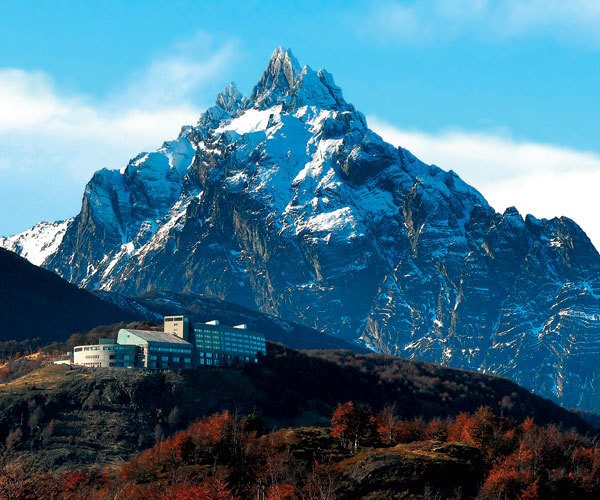 The Salar de Uyuni, Bolivia
Recently used as the real-life set for a blockbuster Star Wars film, the celestial white expanse of the Uyuni Salt Flats is easily one of the planet’s most striking natural wonders. This desolate crystalline landscape is equally as wonderful in the dry and wet seasons for stargazing. The Salar’s extreme remoteness makes for perfectly clear skies all year round: during the dry season the sparkle of the exposed salt crystals almost radiate a light of their own as they reflect the moonlight, whereas in the wet season, the pattern of the night sky is reflected perfectly on the glossy mirror of the Salar’s wet surface.
The Salar de Uyuni, Bolivia
Recently used as the real-life set for a blockbuster Star Wars film, the celestial white expanse of the Uyuni Salt Flats is easily one of the planet’s most striking natural wonders. This desolate crystalline landscape is equally as wonderful in the dry and wet seasons for stargazing. The Salar’s extreme remoteness makes for perfectly clear skies all year round: during the dry season the sparkle of the exposed salt crystals almost radiate a light of their own as they reflect the moonlight, whereas in the wet season, the pattern of the night sky is reflected perfectly on the glossy mirror of the Salar’s wet surface.
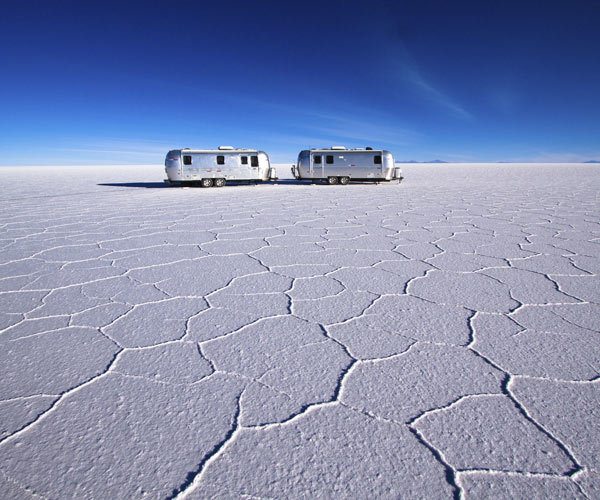 How to do it
Uyuni is accessible via short local flights from La Paz and overland from the nearby Atacama Desert in Chile. We recommend dedicating between 3 and 5 nights to a comprehensive tour of the breath-taking scenery in the region across the south of Bolivia and the north of Chile in order to tick off all the highlights of the area’s impressive geography. Newly opened Kachi Lodge (pictured) in Uyuni offers a fully personalised full-board luxury experience of the Salt Flats with indulgent cuisine provided in partnership with Gustu, La Paz’s most in-demand eatery.
How to do it
Uyuni is accessible via short local flights from La Paz and overland from the nearby Atacama Desert in Chile. We recommend dedicating between 3 and 5 nights to a comprehensive tour of the breath-taking scenery in the region across the south of Bolivia and the north of Chile in order to tick off all the highlights of the area’s impressive geography. Newly opened Kachi Lodge (pictured) in Uyuni offers a fully personalised full-board luxury experience of the Salt Flats with indulgent cuisine provided in partnership with Gustu, La Paz’s most in-demand eatery.
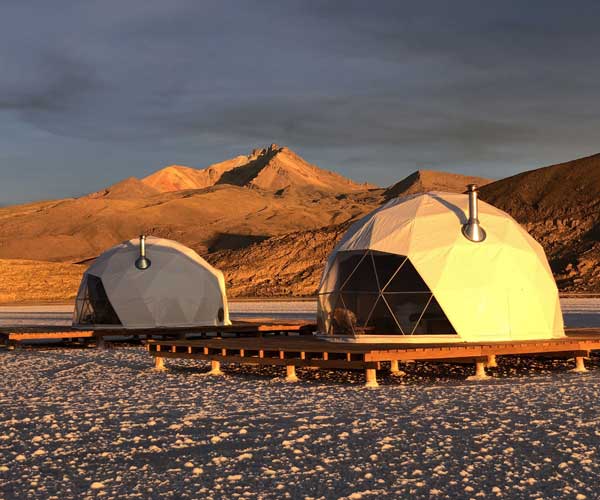
Did you enjoy this article?
Receive similar content direct to your inbox.


People tell me that the Southern Hemisphere sky is far more spectacular for star-gazing than the northern hemisphere. Unfortunately on my Southern Hemisphere trips I’ve either been in cities with light pollution or plagued by thick cloud.
Obviously, I’m not going to travel thousands of miles just to see some stars but it does seem to me that the Atacama Dessert is certainly trending. I’m reading more and more about it and I’ve got some friends travelling there next year. Finally, it could be the perfect spot for some star-gazing for me.
It’s a shame your trips to the Southern Hemisphere haven’t been successful for star gazing, light pollution and cloud would certainly ruin the clear nights you need to see the stars. It’s handy to know where’s likely to have less light pollution in this article but I wouldn’t travel simply for that express purpose either, which is why I like places here you can do more with, like exploring the local area full of wildlife or hiking the canyons. There’s something quite romantic and meaningful about star gazing though, I guess because it connects us to something bigger than ourselves and our small place in the Universe.
As the post goes on it’s as if the images come from another world. Even that picture of the pool is eerily still and serene. As for the picture of the silver caravans on the desert that is way out surreal. It looks like a Star Wars location shoot. Even those tent / pod / things seem as if they’ve landed from the future. It’s all weird in a sort of odd way.
I’m planning to do a big tour of Latin America within the next year or two. I’ve dipped into Latin America briefly before but there still remains so much that I want to see and experience. However, my experiences of travel in Latin America in the past have taught me that it can be quite wearing with some anxious moments too along the way.
After reading this I’m getting the idea of a luxury break in the Atacama desert mid-way through to rest, recover and reflect on what I’d seen and done so far. Then recharged, hopefully after some fantastic star-gazing, I would be ready to resume my travels.
The Tatacoa Desert in Columbia looks to be a very spectacular landscape. You want such places almost to yourself so it’s good that it’s even quieter than Chile’s Atacama Desert. But after a while even I might tire of desert landscapes and empty horizons. You talk about hiring a guide to take you round the views but how long would you recommend for a stay in the Tatacoa? Maybe three nights, so that you’ve got two full days to explore? I would guess that it’s going to be quite a drive in and out of the desert anyway so I would see plenty of the landscape then.
This would be such romantic getaway idea, to go stargazing at any of these places because they’re all so beautiful. Somewhere like the Caiman Ecological Refuge would be so sweet for a Honeymoon.
The Uyuni Salt Flats is so strange! It’s hard to believe that’s real. I personally quite like the thought of visiting the Tatacoa Desert because it would be a fascinating place to explore, but it’s good to know there are guides to help with navigating canyon hikes as I’d probably worry about getting lost and stranded out there!